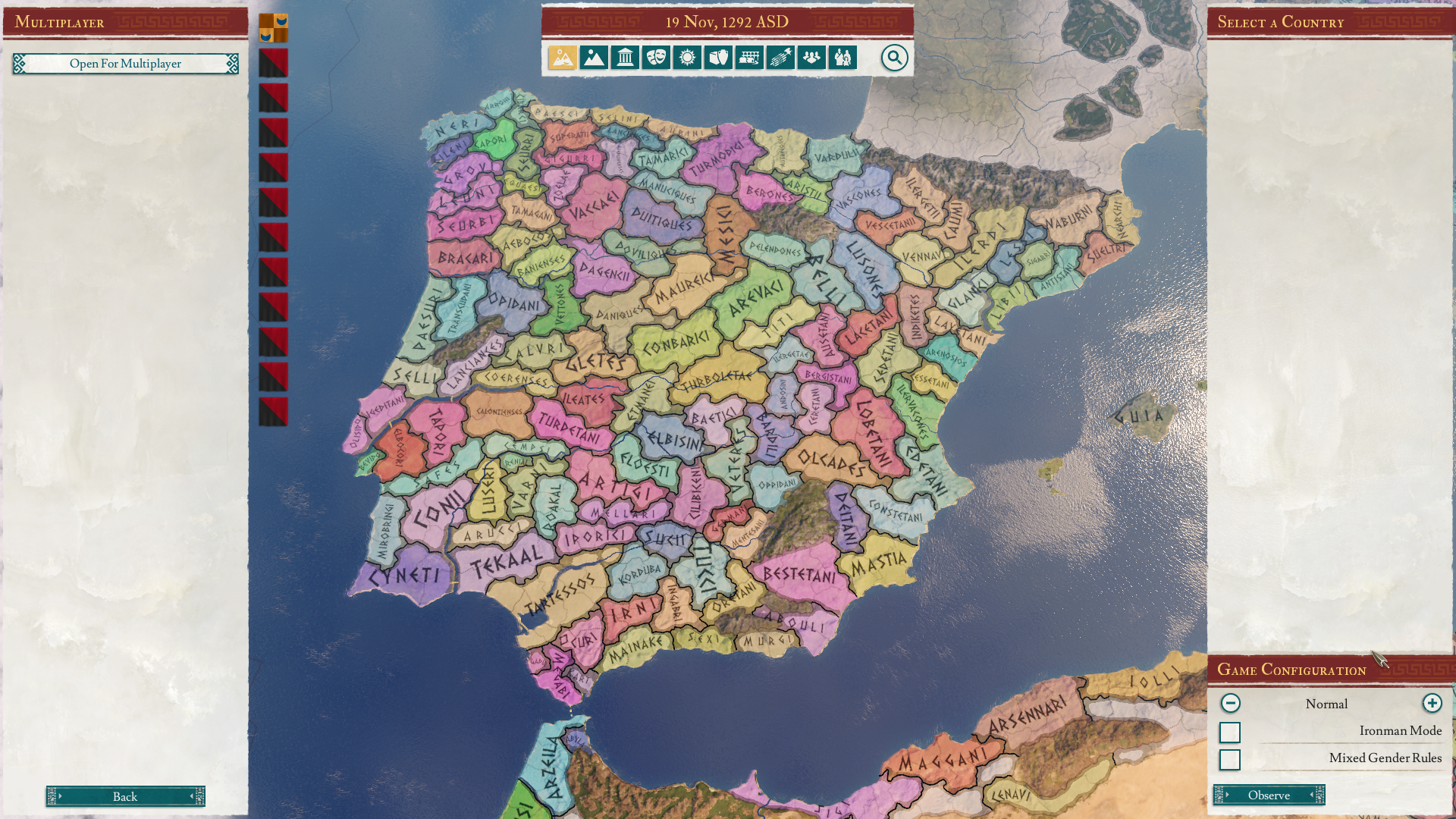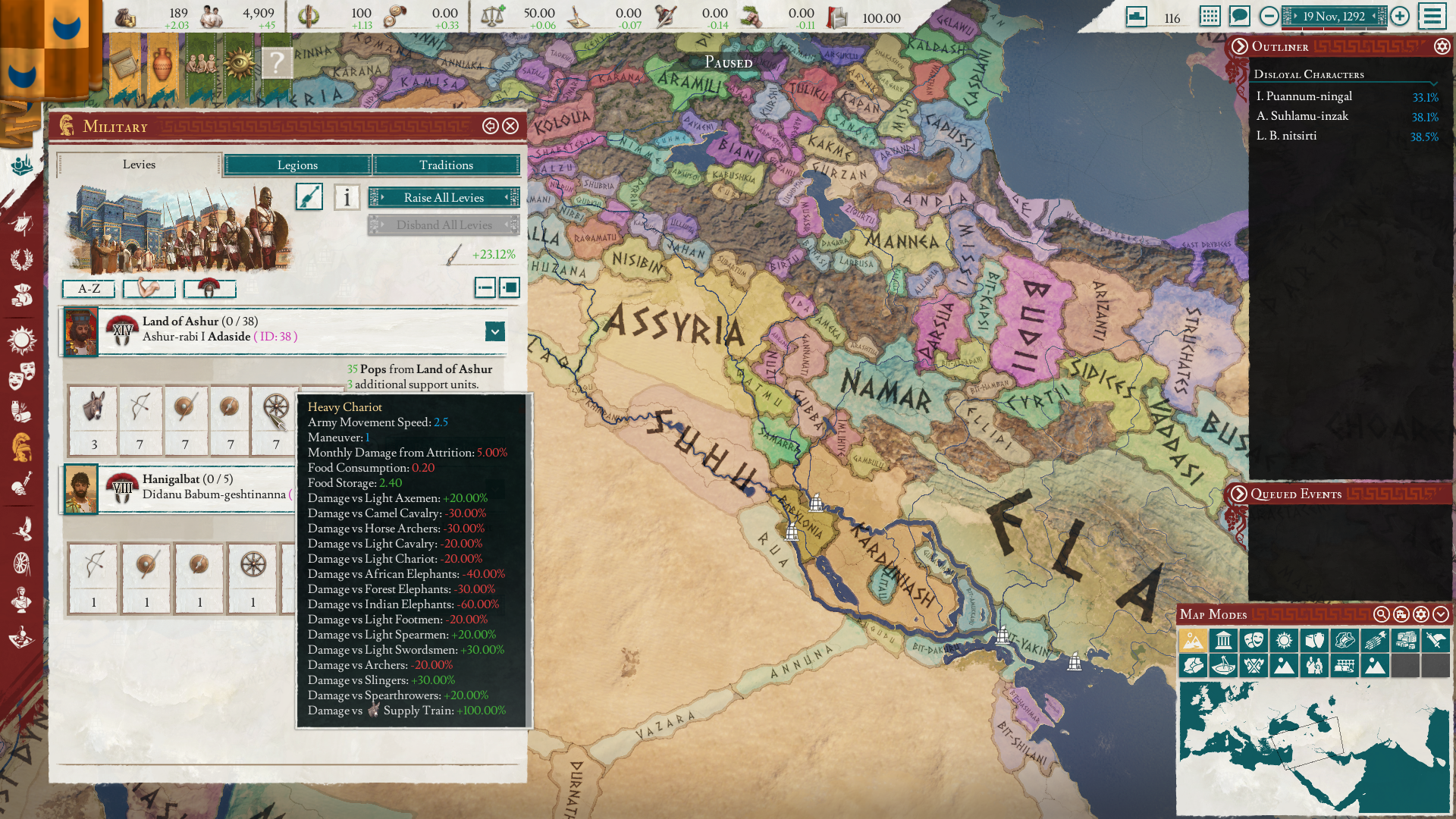Dev Diary 1: Vision

Hello, Petrus66 here, I would like to show you the mod I have been working on recently. I have always been fascinated by the periods of turmoil in ancient history and how countries dealt with them (or not as the picture shows ).
).

The Bronze Age ended when desperate seafarers attacked the Middle Eastern empires, ending the old order. The wave of invaders destroyed city after city from Greece to Palestine. Archaeologists are digging up traces of destruction, hasty evacuation or even reports like in Ugarit confirming how quickly events have progressed . Proof of how large the operation was is evidenced by the participation in the attack of the Libyan tribes led by Merjey, the Greeks from Crete, the Luccans from Anatolia and presumably the inhabitants of Sardinia (and other still unidentified nations). The final stop on their journey was Egypt under Ramses III (drawing above), who managed to stop them. New fighting style of newcomers, however, undermined the primacy of chariots as the main weapon around which the whole tactic was built so far. The cut trade routes also forced the rulers to find an alternative to bronze.

The new world in which people found themselves required new solutions. It was during this period that iron began to be used. Iron did not required the import of tin from places such as Afghanistan or Spain (Yes people realy travelled as far as Britain for it). Another invention is the regular army introduced during the reign of assyrian emperor Tiglath-Pilaser III. The Iron Age is also the period known from the Bible where Pharaoh Shoshenq, of Libyan origin shown above, made a guest appearance.

I decided to count time from the death of Sargon the Great till this moment, the creator of the largest empire in the history of the world, and the goal of the game is to surpass his achievements and follow the path of Cyrus II or your own. The date is still uncertain as the reign dates during this period may vary by about 10 years but it will be around 984BC .

I decided to leave the old map, possibly changing it to fit the period, adding a few territories. The cultural affiliation of several nationalities also bothers me and in many cases I will use mythological characters for more fun except in regions where historical figures are known. I will try to design the nations so that each is played differently, for example assyrians having martial culture should have better units and bigger levy size then Babylonians (goal will be to unbalance the game and make it more realistic). As a curiosity I will add that King David was probably a historical figure because the Judean dynasty was called the house of David by its neighbors (as the name of the country people used the name of the founder or the name of the capital like Samaria or house of Omri for northern kingdom of Israel). Therefore, next to the revolt of the Libyans led by Osorkon the Elder, or the overthrow of the Bazi dynasty by elamite migrant, I added David's war with Ishbaal.
The mod is still early in production so a lot can and will change. I would like to know your suggestions and if you are interested in the project at all. Stay safe and thanks to Lambert for being inspiration for the mod see you all in the next dev diary.
Later Edit: If you want to read other dev diaries use the Threadmark function at the top of this message and click on the dev diary you are interested in. You will definitely find an interesting topic.

Hello, Petrus66 here, I would like to show you the mod I have been working on recently. I have always been fascinated by the periods of turmoil in ancient history and how countries dealt with them (or not as the picture shows

The Bronze Age ended when desperate seafarers attacked the Middle Eastern empires, ending the old order. The wave of invaders destroyed city after city from Greece to Palestine. Archaeologists are digging up traces of destruction, hasty evacuation or even reports like in Ugarit confirming how quickly events have progressed . Proof of how large the operation was is evidenced by the participation in the attack of the Libyan tribes led by Merjey, the Greeks from Crete, the Luccans from Anatolia and presumably the inhabitants of Sardinia (and other still unidentified nations). The final stop on their journey was Egypt under Ramses III (drawing above), who managed to stop them. New fighting style of newcomers, however, undermined the primacy of chariots as the main weapon around which the whole tactic was built so far. The cut trade routes also forced the rulers to find an alternative to bronze.

The new world in which people found themselves required new solutions. It was during this period that iron began to be used. Iron did not required the import of tin from places such as Afghanistan or Spain (Yes people realy travelled as far as Britain for it). Another invention is the regular army introduced during the reign of assyrian emperor Tiglath-Pilaser III. The Iron Age is also the period known from the Bible where Pharaoh Shoshenq, of Libyan origin shown above, made a guest appearance.

I decided to count time from the death of Sargon the Great till this moment, the creator of the largest empire in the history of the world, and the goal of the game is to surpass his achievements and follow the path of Cyrus II or your own. The date is still uncertain as the reign dates during this period may vary by about 10 years but it will be around 984BC .

I decided to leave the old map, possibly changing it to fit the period, adding a few territories. The cultural affiliation of several nationalities also bothers me and in many cases I will use mythological characters for more fun except in regions where historical figures are known. I will try to design the nations so that each is played differently, for example assyrians having martial culture should have better units and bigger levy size then Babylonians (goal will be to unbalance the game and make it more realistic). As a curiosity I will add that King David was probably a historical figure because the Judean dynasty was called the house of David by its neighbors (as the name of the country people used the name of the founder or the name of the capital like Samaria or house of Omri for northern kingdom of Israel). Therefore, next to the revolt of the Libyans led by Osorkon the Elder, or the overthrow of the Bazi dynasty by elamite migrant, I added David's war with Ishbaal.
The mod is still early in production so a lot can and will change. I would like to know your suggestions and if you are interested in the project at all. Stay safe and thanks to Lambert for being inspiration for the mod see you all in the next dev diary.
Later Edit: If you want to read other dev diaries use the Threadmark function at the top of this message and click on the dev diary you are interested in. You will definitely find an interesting topic.
Last edited:
- 31
- 4







































































































